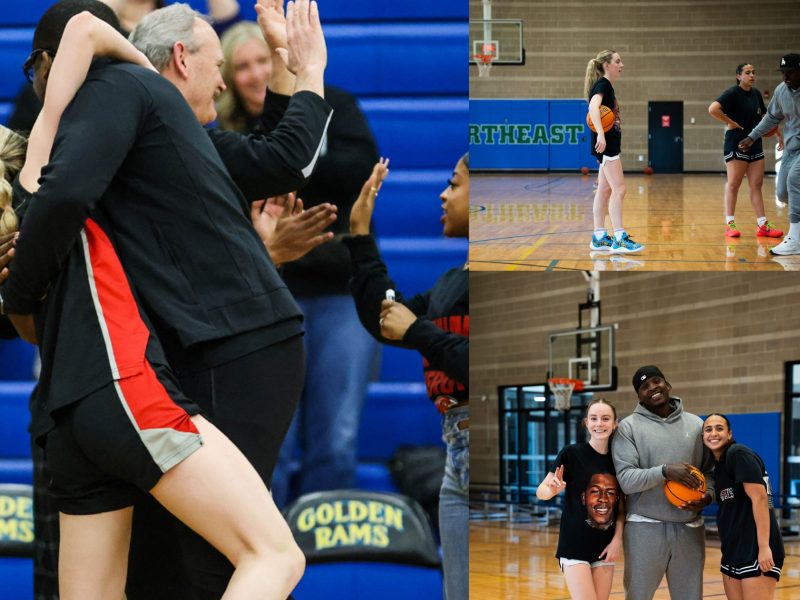Pokémon Stadium
I never had a Nintendo 64. I don’t think I have ever wanted something more in my life. Letters to Santa, relentless questioning of my parents and even actual prayers went unanswered.
So I did what any crafty child did. I made friends in the right places. And let me tell you: A friend with an N64 is a friend indeed.
But some of the best games, many of which are featured in this very Nintendo 64 Madness (Legend of Zelda: Ocarina of Time, Super Mario 64), were single-player only.
Sure, there was GoldenEye 007; there was the original Super Smash Bros. But I suck at most video games, especially those that require any semblance of coordination (or movement, for that matter). Probably because I never had a Nintendo 64.
“Fear not,” the marketing gods at Nintendo seemed to whisper to me, a 7-year-old begging for a video game niche, on Feb. 29, 2000. “For we bring tidings of great joy to losers like you.”
That day, the greatest communal experience to grace humankind (but not win a first-round matchup with Mario Party) descended from above: Pokémon Stadium. Everything changed. My life would never be the same — until probably middle school.
Multiplayer role-playing game mechanics with level 100 Mewtwos and Blastoises and Charizards available straight out of the box? How? No. What? Never. How?
The rules were off. The very structure that dictated my adolescence was thrown aside in favor of the ability to hydro pump my besties into oblivion.
In the strangest combination of Lord of the Flies and The Wizard, the law came instead from us. You couldn’t watch what Pokémon your opponent picked. Sometimes, you had to leave the room. Gotta keep those honeys hidden. That way, your opponent won’t get a strategic advantage. Mewtwo was off limits. Single battle or series was decided ahead of time.
The battle format was ideal. Three Pokémon apiece, first to zero loses. It was short enough for our attention spans to handle but substantial enough to create some battles for the ages.
It was the best thing to happen to a video-gameless kid in a video game world. And I’ll remember it forever.
–Dan Appenfeller
Banjo-Kazooie
Banjo-Kazooie has a lot going for it: It’s an innovative, challenging, silly and entertaining gem of a bygone era of video games. But on paper, it just sounds bizarre.
The titular characters are an anthropomorphic, yellow shorts-wearing bear and his large bird friend who spends a majority of her time in Banjo’s blue backpack. Their mission is to chase after a witch through varied, colorful worlds in order to save Banjo’s sister, Tooty, from the witch, who wants to steal the young bear’s beauty.
The whole deal sounds pretty weird.
For every element of this setup that has some sort of precedent — the “toil and trouble” villainy of the witch, Gruntilda — there are others that make the most sense in the minds of the game’s creators —Banjo’s inexplicable interest in yellow shorts.
The tag team of Banjo and Kazooie is at the center of the platforming gameplay and their interactions with other characters throughout the game. As a bear, Banjo doesn’t have an easy time with jumping feats, but Kazooie makes up for that by flapping her wings in midair to give Banjo better air time.
Every world that the duo explores — ranging from a Christmas wonderland to a toxic industrial harbor — is full of varied scenarios that award Jiggies, or magical jigsaw pieces. Exploring the worlds for Jiggies is both the main way players progress through the game and the main way it can take until late hours of the night to finally put the controller down. So-called “collectathons” are far more fun than critics claim.
People also criticize the game for being too similar to its higher-profile counterpart, Super Mario 64, but Banjo-Kazooie took the platforming genre in a direction both familiar to that game but also distinctly different from it.
Banjo and Kazooie learn new moves as they go, giving the game a sense of advancement that is absent in Mario’s static moveset. Finding out how to get a Jiggy is also usually more unpredictable than finding stars, the equivalent of Jiggies for Mario.
Rare, the British studio behind Banjo-Kazooie, its also excellent sequel, Banjo-Tooie, and several other N64 classics, including Goldeneye, had greater freedom in 1998 to explore unique creative avenues. Its N64 games are bursting with personality and pleasantly goofy tone that are unique to Rare. Banjo-Kazooie’s unique charm represents a time when outlandish ideas were embraced and rewarded with critical and commercial success that Rare has not been able to replicate since being bought by Microsoft in 2002.
Banjo-Kazooie might sound like some rejected concept for a children’s show, but it was an important stepping stone for platformers and is still a blast to play. Plus, there are many, many people who have given a strange concept — controlling a mustachioed Italian plumber who jumps, eats mushrooms and shoots fireballs at turtles — a fair chance and, dozens of installments later, that’s worked out just fine.
–Brian Compere
Vote in nonfeatured matchups, too.


